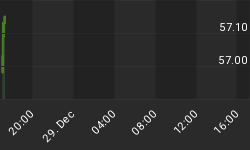Comcast Corp (CMCSA) initiated its first dividend in calendar year 2008, as depicted by the light blue shaded area on the historical graph below, and has increased every year since. With Comcast Corp's stock appearing undervalued, this may be a good time for investors to evaluate this stock to possibly add to their portfolio.
About Comcast Corp: Directly from their website
"Comcast Corporation (Nasdaq: CMCSA, CMCSK) (www.comcast.com) is one of the world's leading media, entertainment and communications companies. Comcast is principally involved in the operation of cable systems through Comcast Cable and in the development, production and distribution of entertainment, news, sports and other content for global audiences through NBCUniversal. Comcast Cable is one of the nation's largest video, high-speed Internet and phone providers to residential and business customers. Comcast is the majority owner and manager of NBCUniversal, which owns and operates entertainment and news cable networks, the NBC and Telemundo broadcast networks, local television station groups, television production operations, a major motion picture company and theme parks."
Earnings Determine Market Price: The following earnings and price correlated F.A.S.T. Graphs™ clearly illustrates the importance of earnings. The Earnings Growth Rate Line or True Worth™ Line (orange line with white triangles) is correlated with the historical stock price line. On graph after graph the lines will move in tandem. If the stock price strays away from the earnings line (over or under), inevitably it will come back to earnings.
Earnings & Price Correlated Fundamentals-at-a-Glance
A quick glance at the historical earnings and price correlated FAST Graphs™ on Comcast Corp shows a picture of moderate undervaluation based upon the historical earnings growth rate of 26.1% and a current PE of 21.4. Analysts are forecasting the earnings growth to continue at about 14.7%; therefore, based on the forecasting graph below, the stock appears slightly overvalued based on a lower-than-expected historical future earnings growth rate.
Comcast Corp: Historical Earnings, Price, Dividends and Normal PE Since 2005

Performance Table Comcast Corp
The associated performance results with the earnings and price correlated graph, validates the principles regarding the two components of total return; capital appreciation and dividend income. Dividends are included in the total return calculation and are assumed paid, but not reinvested.
When presented separately like this, the additional rate of return a dividend paying stock produces for shareholders becomes undeniably evident. In addition to the 5.7% capital appreciation (green circle), long-term shareholders of Comcast Corp, assuming an initial investment of $1,000, would have received an additional $61.88 in dividends (blue highlighting) that increased their total return from 5.7% to 6.3% per annum versus 5.6% in the S&P 500 (red circle).

The following graph plots the historically normal PE ratio (the dark blue line) in conjunction with 10-year Treasury note interest. Notice that the current price earnings ratio on this quality company is as low as it has been since 2005.

A further indication of valuation can be seen by examining a company's current price to sales ratio relative to its historical price to sales ratio. The current price to sales ratio for Comcast Corp is 1.53 which is historically low.

Looking to the Future
Extensive research has provided a preponderance of conclusive evidence that future long-term returns are a function of two critical determinants:
- The rate of change (growth rate) of the company's earnings
- The price or valuation you pay to buy those earnings
Forecasting future earnings growth, bought at sound valuations, is the key to safe, sound, and profitable performance.
The Estimated Earnings and Return Calculator Tool is a simple yet powerful resource that empowers the user to calculate and run various investing scenarios that generate precise rate of return potentialities. Thinking the investment through to its logical conclusion is an important component towards making sound and prudent commonsense investing decisions.
The consensus of 29 leading analysts (purple highlighting) reporting to Capital IQ forecast Comcast Corp's long-term earnings growth at 16.2% (orange circle). Comcast Corp has medium long-term debt at 37% of capital (red circle). Comcast Corp is currently trading at a P/E of 21.4, which is inside the value corridor (defined by the five orange lines) of a maximum P/E of 19.4. If the earnings materialize as forecast, Comcast Corp's True Worth™ valuation would be $65.27 at the end of 2017 (brown circle on EYE Chart), which would be a 14.7% annual rate of return from the current price (yellow highlighting).

Earnings Yield Estimates
Discounted Future Cash Flows: All companies derive their value from the future cash flows (earnings) they are capable of generating for their stakeholders over time. Therefore, because Earnings Determine Market Price in the long run, we expect the future earnings of a company to justify the price we pay.
Since all investments potentially compete with all other investments, it is useful to compare investing in any prospective company to that of a comparable investment in low risk Treasury bonds. Comparing an investment in Comcast Corp to an equal investment in 10 year Treasury bonds, illustrates that Comcast Corp's expected earnings would be 6.6 (purple circle) times that of the 10 Year T-Bond Interest. (See EYE chart below). This is the essence of the importance of proper valuation as a critical investing component.

Summary & Conclusions
This report presented essential "fundamentals at a glance" illustrating the past and present valuation based on earnings achievements as reported. Future forecasts for earnings growth are based on the consensus of leading analysts. Although, with just a quick glance you can know a lot about the company, it's imperative that the reader conducts their own due diligence in order to validate whether the consensus estimates seem reasonable or not.
Disclosure: No position at the time of writing.
















